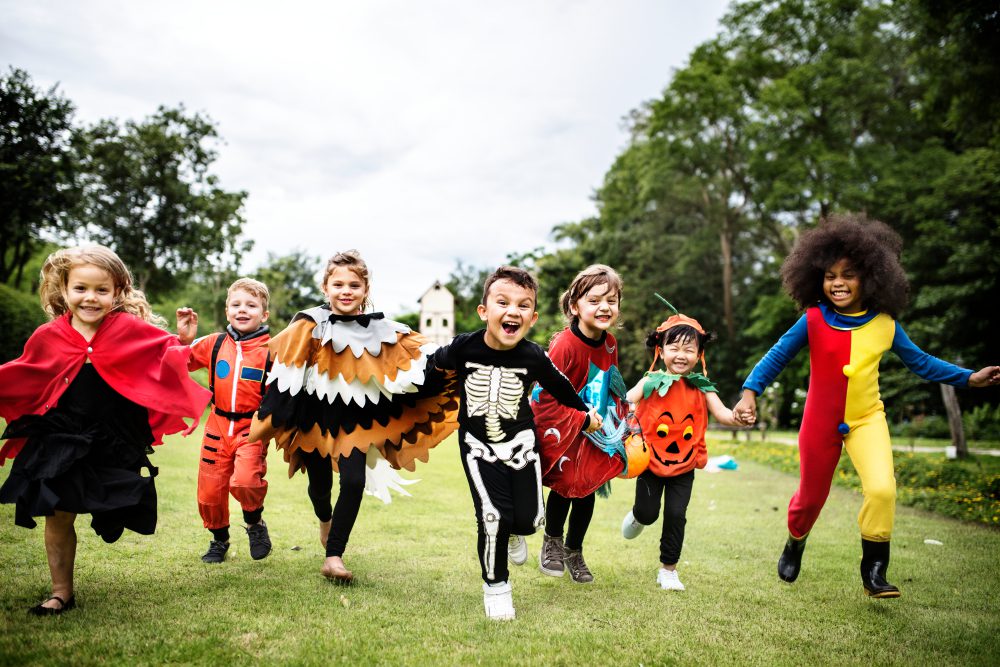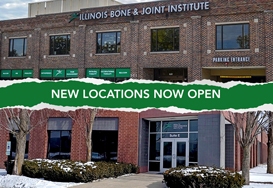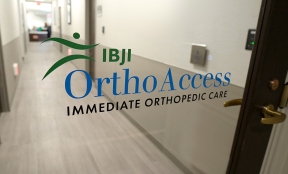
Amidst the excitement of Halloween, kids can get injured in a variety of ways. They may charge into the street without looking, trip over their bulky costume, cut themselves when carving pumpkins, or sprain an ankle running with fellow trick-or-treaters.
Although Halloween is one of America’s favorite holidays, the fun can come to a halt when these accidents occur.
Research from the National Electronic Injury Surveillance System (NEISS) shows that on or around Halloween between 2007 and 2016, more than 704,000 pediatric injuries were reported by U.S. emergency departments.
Prevention is the key to lowering the risk of injury during Halloween week, according to Albert Knuth, MD, who practices at the IBJI Doctors’ Offices in Elmhurst, Fox River Grove, and Park Ridge.
Read his Q&A below.
What are some of the most common injuries that result from Halloween activities?
Dr. Knuth: For most, the goal of trick or treating is to get the most candy possible. This requires running from house to house, often in evening hours with limited visibility and on uneven grounds. This can lead to twisting of the foot and ankle causing fractures, sprains, and falls onto an outstretched hand (FOOSH) and resultant wrist fractures and sprains.
Pedestrian vs. Automobile accidents have a significant rise during Halloween week. Perhaps everyone's greatest fear is an excited child who runs out into the road in front of a passing car. Make sure to use sidewalks and designated crosswalks and stress extra precautions to kids of all ages. If costumes are dark, use flashlights or reflectors on costumes and shoes to stay visible.
Cuts or lacerations from pumpkin cutting and carving are also common. Make sure activities are age appropriate. Adults and older children should cut or carve and younger children scoop out seeds.
What are some uncommon injuries that result from Halloween activities?
Anaphylaxis from peanuts or other nuts contained in candy eaten by the excited child before safely sorting the candy. Burns can also occur from the combination of candles and flammable costumes, wigs, and beards.
What is your best advice to families looking to prevent these injuries?
Prevention is the key. Children should be supervised at all times. Limiting trick-or-treating to daytime hours which are well-lit can reduce risk for injuries. Keep to sidewalks and use designated crosswalks where cars expect you to cross.
For those with food sensitivities and allergies, sorting candy and reading the list of ingredients with children prior to eating the candy can reduce risk and increase awareness.
Before starting a Halloween activity, such as pumpkin carving, it's important to establish safety rules with young children. Pumpkin carving tools and even the flame from small candles can result in injury.
What are your Jack-O-Lantern carving safety tips?
Make sure activities are age appropriate. Adults and older children should cut or carve and younger children scoop out seeds. A creative alternative for younger children is to paint pumpkins and use markers or other non-carving decoration kits.
AAOS OrthoInfo suggests using pumpkin carving kit tools specifically designed for carving can limit risk. These are less likely to get stuck in the thick pumpkin skin for adults doing the carving.
If you cut your hand or upper extremity, what should you do?
First, elevate and place pressure on the laceration/cut. If minor, the bleeding should stop soon. Make sure to clean the cut with warm soapy water to minimize infection risk and cover it with a bandaid. If the laceration is deep and/or the bleeding doesn't stop, seek help at the emergency department, urgent care, or IBJI’s OrthoAccess facilities for professional evaluation and treatment.
What should parents look for in Halloween costumes?
Costumes can be too big which makes ambulation difficult leading to falls and injuries. Testing costumes at home to ensure they fit properly can prevent accidents later.
Costumes, masks, beards, and wigs may not be flame resistant. Try to avoid all cotton costumes, lit candles, and open fires. Look for flame-resistant costumes and accessories when possible.
Masks may limit a child's vision leading to injuries - "we can't avoid the obstacle if we can't see it".
Bright-colored costumes make it easier for children to be seen at dusk or in the dark. Add reflective tape to costumes, shoes, and treat bags to provide additional visibility.
What are the benefits of seeing a pediatric orthopedist?
A pediatric orthopedist is a physician who specializes in treating bone and joint abnormalities in children. The musculoskeletal care and treatment of orthopedic conditions in children and teens are different from the care and treatment of adults. When it comes to acute injuries in children and teens, pediatric orthopedists have greater expertise in the diagnosis and comprehensive treatment of fractures, sprains, and growth plate fractures.
According to AAOS OrthoInfo, 15% to 30% of all childhood fractures are growth plate fractures. Growth plates are areas of cartilaginous tissues found at the end of a growing child’s long bones. These “soft bones” later harden to become solid bones once your child has stopped growing and reached adulthood. For the best long-term outcomes, these fractures must be watched carefully. Your doctor will recommend regular follow-up visits for at least a year to make sure the growth plate is growing properly.
You can’t always predict when an accident will happen.
If you or your child experiences an acute injury on Halloween, OrthoAccess treats fractures, breaks, and sprains. A certified orthopedic specialist can see you promptly without an appointment at any of our convenient locations.
Visit ibji.com/orthoaccess to find your nearest walk-in clinic for orthopedic immediate care.




